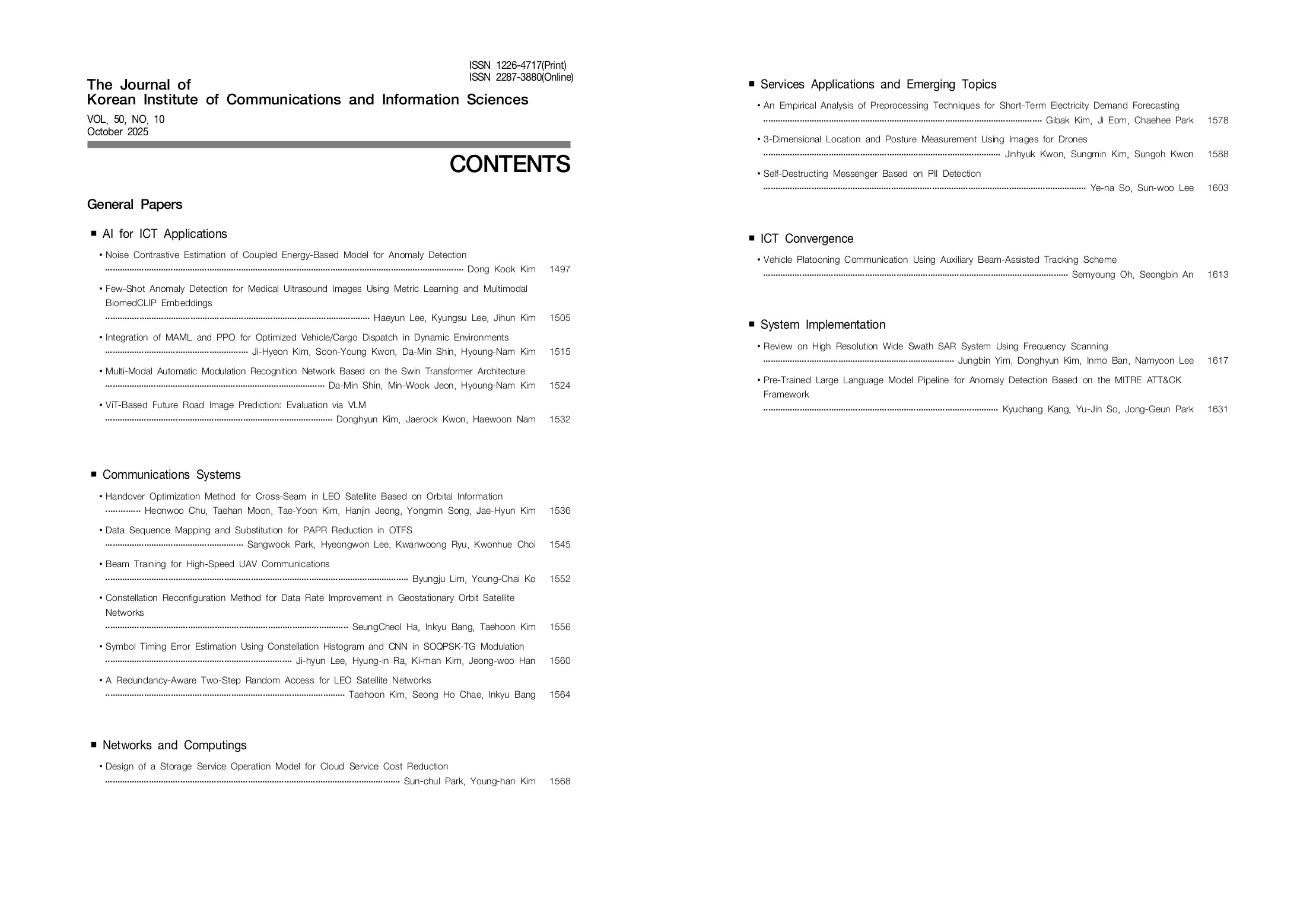Best Papers Review on High Resolution Wide Swath SAR System Using Frequency Scanning
Vol. 50, No. 10, pp. 1617-1630, Oct. 2025
 10.7840/kics.2025.50.10.1617
10.7840/kics.2025.50.10.1617
PDF Full-Text
Abstract
Statistics
Cumulative Counts from November, 2022
Multiple requests among the same browser session are counted as one view. If you mouse over a chart, the values of data points will be shown.
Multiple requests among the same browser session are counted as one view. If you mouse over a chart, the values of data points will be shown.
|
|
Cite this article
[IEEE Style]
J. Yim, D. Kim, I. Ban, N. Lee, "Review on High Resolution Wide Swath SAR System Using Frequency Scanning," The Journal of Korean Institute of Communications and Information Sciences, vol. 50, no. 10, pp. 1617-1630, 2025. DOI: 10.7840/kics.2025.50.10.1617.
[ACM Style]
Jungbin Yim, Donghyun Kim, Inmo Ban, and Namyoon Lee. 2025. Review on High Resolution Wide Swath SAR System Using Frequency Scanning. The Journal of Korean Institute of Communications and Information Sciences, 50, 10, (2025), 1617-1630. DOI: 10.7840/kics.2025.50.10.1617.
[KICS Style]
Jungbin Yim, Donghyun Kim, Inmo Ban, Namyoon Lee, "Review on High Resolution Wide Swath SAR System Using Frequency Scanning," The Journal of Korean Institute of Communications and Information Sciences, vol. 50, no. 10, pp. 1617-1630, 10. 2025. (https://doi.org/10.7840/kics.2025.50.10.1617)
Vol. 50, No. 10 Index



